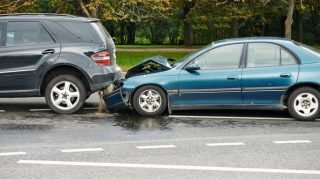The Most Common Injuries Sustained in Car Accidents
Injuries of varying severity are normal outcomes of the car accidents that occur much too frequently on our highways. These wounds range in severity, from somewhat minor to potentially fatal. Here we’ll have a look at some of the most typical automobile accident wounds.
Whiplash
When a car is struck from behind, it can cause a painful jolt to the neck known as whiplash. Injury to the neck’s muscles and ligaments results from a jarring forward-and-backward motion of the head. Headaches, dizziness, and neck discomfort are all possible symptoms.
Shattered Bones
Fragile bones are another typical automobile accident damage. These injuries might be the result of a collision with another object in the car, a quick jolt to the body, or a rapid twist of the body. Ribs, arms, and legs are the most common fracture sites in automobile accidents.
Injury to the Head
Minor concussions and serious traumatic brain injuries are both examples of head injuries (TBIs). These can happen when the head strikes anything hard, including the dashboard, the steering wheel, the glass, or even flying debris from an accident. Headaches, dizziness, disorientation, and even passing out are possible side effects.
Bleeding in the Spine
Spinal cord injuries are among the most debilitating and disabling that can result from a car crash. These can happen when the spine is crushed or twisted, or when the body is shocked suddenly and violently. Backache, paralysis, and a lack of feeling in the limbs are only some of the possible symptoms.
Bruises and Cuts
Minor injuries such as cuts and bruises from vehicle accidents still require medical treatment and can be quite uncomfortable. These can take place either as a result of the body making contact with another object within the car or with external debris following an accident.
Wounds Inside
Some of the worst injuries that may result from a vehicle crash are internal ones since they are so hard to see and cure. Organs including the liver, spleen, and kidneys are vulnerable to rupture when the body is suddenly and violently twisted or jolted. Internal bleeding, discomfort, and edema are all possible symptoms.
Distress from a traumatic event (PTSD)
Traumatic events, such as a vehicle crash, can trigger post-traumatic stress disorder (PTSD), a mental health disease. It might make it hard for a person to go about their daily lives because of symptoms including flashbacks, nightmares, and anxiety.
Prevention
Anybody can be involved in an automobile accident, but you can lessen your chances by taking precautions. Such examples are:
Using a seatbelt can considerably lower the likelihood of serious injury or death in the case of a car accident.
Respecting the rules of the road: To lessen the likelihood of an incident, drivers should stick to posted speed limits and observe all traffic signals.
Staying focused: Avoiding distractions like talking on the phone, eating, or putting on cosmetics while behind the wheel can save lives.
Preventing mechanical faults that might lead to an accident is a primary reason for maintaining your car on a regular basis.
Defensive driving entails keeping one’s eyes open and one’s mind prepared for anything that may happen on the road.
Conclusion
Injuries sustained in car accidents range from superficial skin lacerations to crippling spinal cord and internal organ damage. While it’s impossible to completely eliminate the possibility of an accident, there are measures you can take to increase your safety and that of your loved ones on the road.









